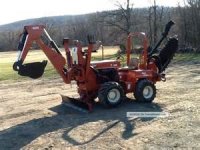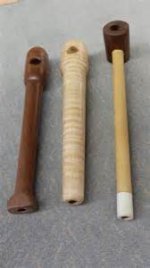He was an innovator, no doubt, and he was onto deflection, but he didn't entirely understand what affects it.
He was probably one step away from figuring out why his shafts deflected less than others, but he missed it.
Here - read this explanation he wrote - many wrong assumptions and this was written back in 1999 after Predator's were already out there cleaning up the market. Not a single reference to end mass. From Meucci's website:
Cue ball deflection will vary from very little (1/8 of an inch in the span of 8 feet) to a whopping 1 1/2 inches in the same span. These variations are a result of three factors;
1. How far off center the cue ball is struck (left or right); the more off center,
the more deflection.
2. The hardness of the surface striking the ball (tip & ferrule) creating varying levels of shock.
3. How much force is used when the ball is struck. The more force applied by speed of stroke, the greater the deflection.
Therefore, when selecting a cue for maximum deflection (which is highly undesirable in my opinion), get one with a stiffly-tapered shaft and a soft tip (13 1/2mm or larger). It should also have a very hard ferrule such as ivory or a phenolic resin type material and a stiff butt-joint such as steel.
Strike the cue ball off-center 3/8 of an inch; hit it hard and you’ll get maximum deflection. The cue ball will veer off-path from the direction the shaft is pointed by 1 1/2 inches in an 8 ft. span, missing the entire object ball when aiming center to center.
Obviously, any player, given enough time, can program his mental computer to make allowances for all deflection variations, if he is playing all the time and in perfect stroke. He can get by with it. In reality, the player has unwittingly handicapped himself.
Through an evolution of trial and error, players in the past discovered inexplicably that they could play better with a smaller mm tip. They dealt with poorly designed cues made with ivory ferrules, steel joints, and improper tapers by reducing the shaft size down to as small as 12mm, they put some flex back into the shaft and unknowingly reduced deflection; unfortunately, at the same time to some degree they also lost the ability to make long shots by having less tip surface and less control, which is only accomplished by using a larger tip.
At Meucci Originals, our focus has always been first and foremost the play of the cue. Secondly, a tasteful design and value for the dollar spent. With that in mind, it should be easy to understand why we designed a shaft with a special Pro-Taper to dramatically reduce deflection yet still enable a full tip size of 12 3/4 mm to 13 1/8 mm to give more control.
If you are looking for minimum cue ball deflection, you will need a cue with a soft/flexible ferrule which will absorb shock and allow the tip to wipe across the ball. The cue should also have a flexible shaft and a plastic joint.



